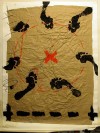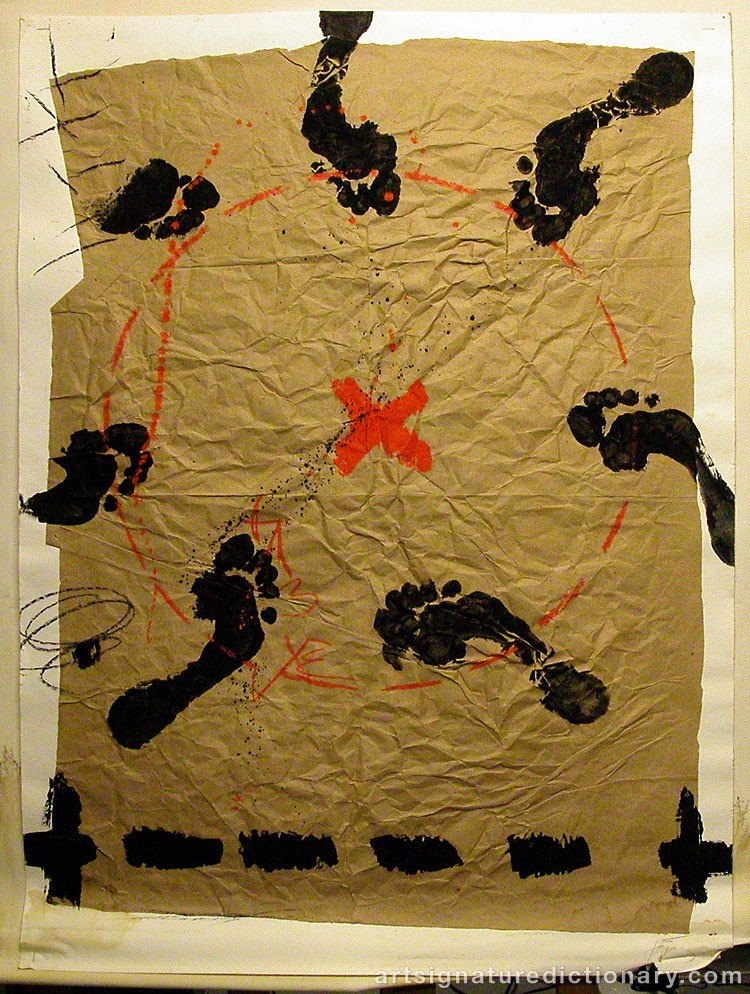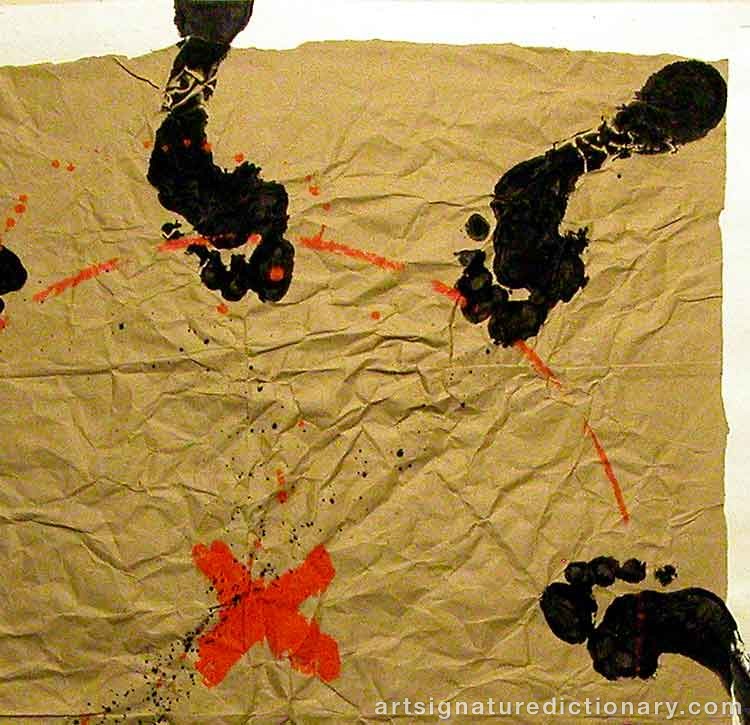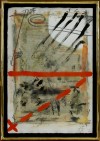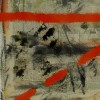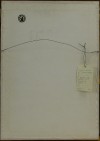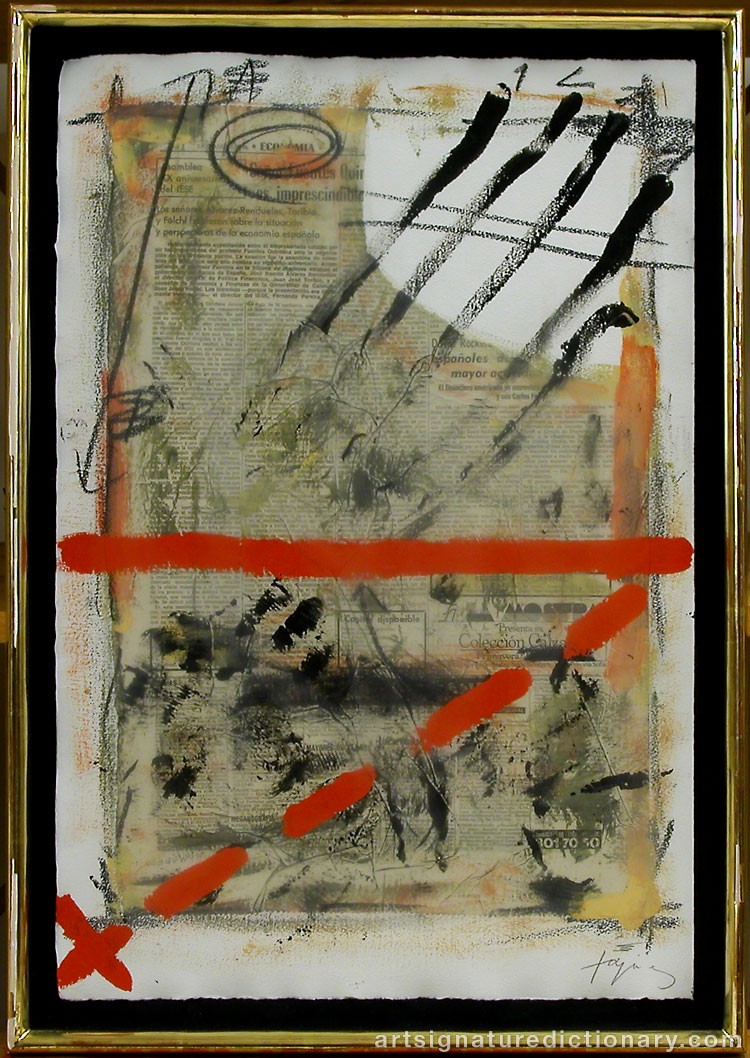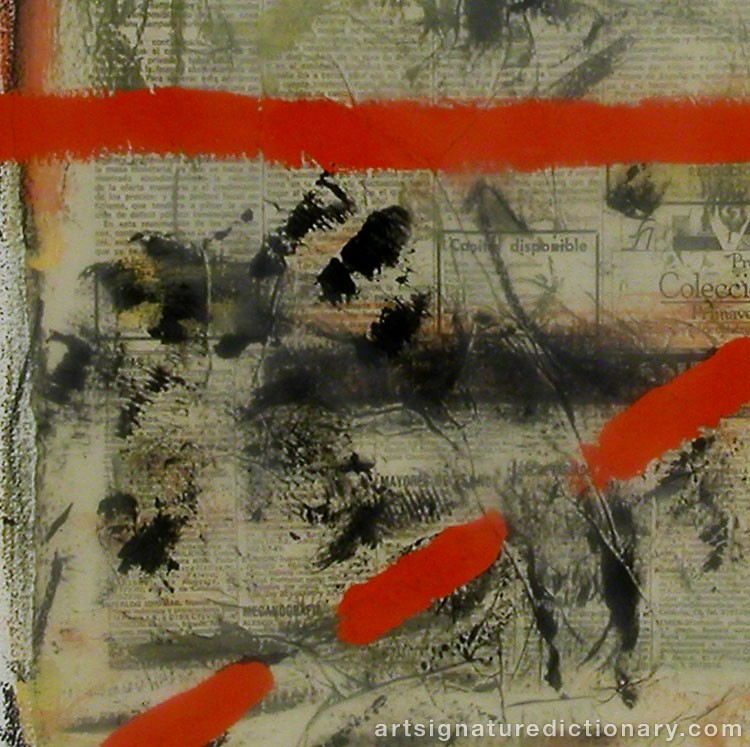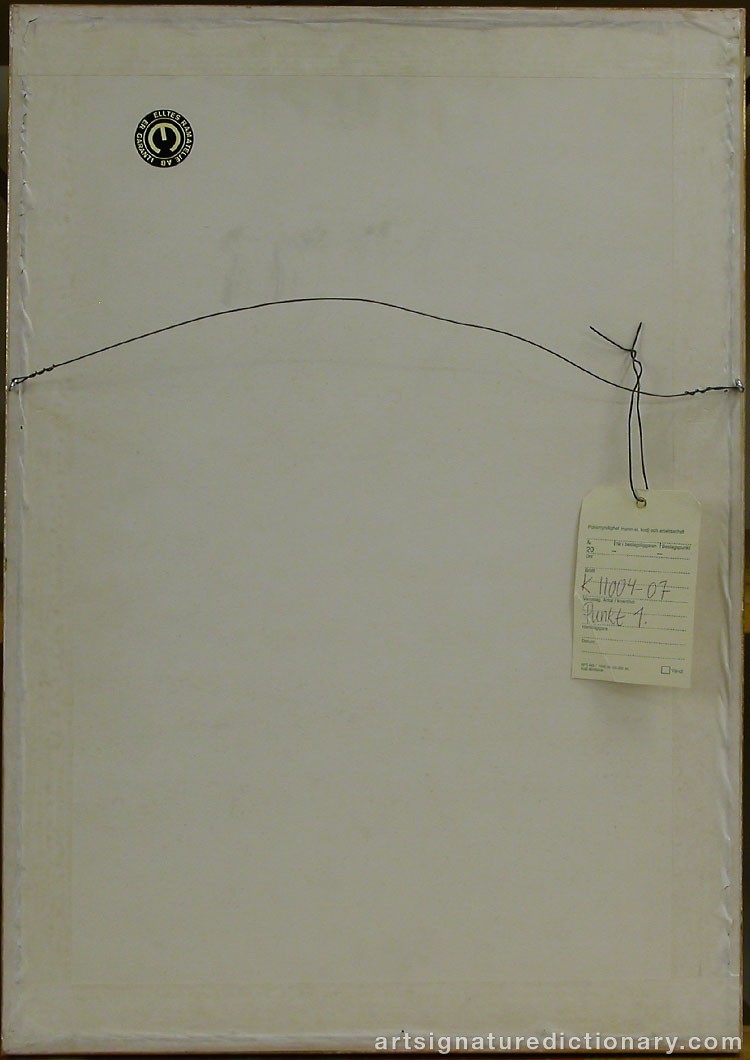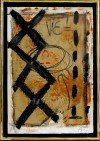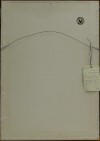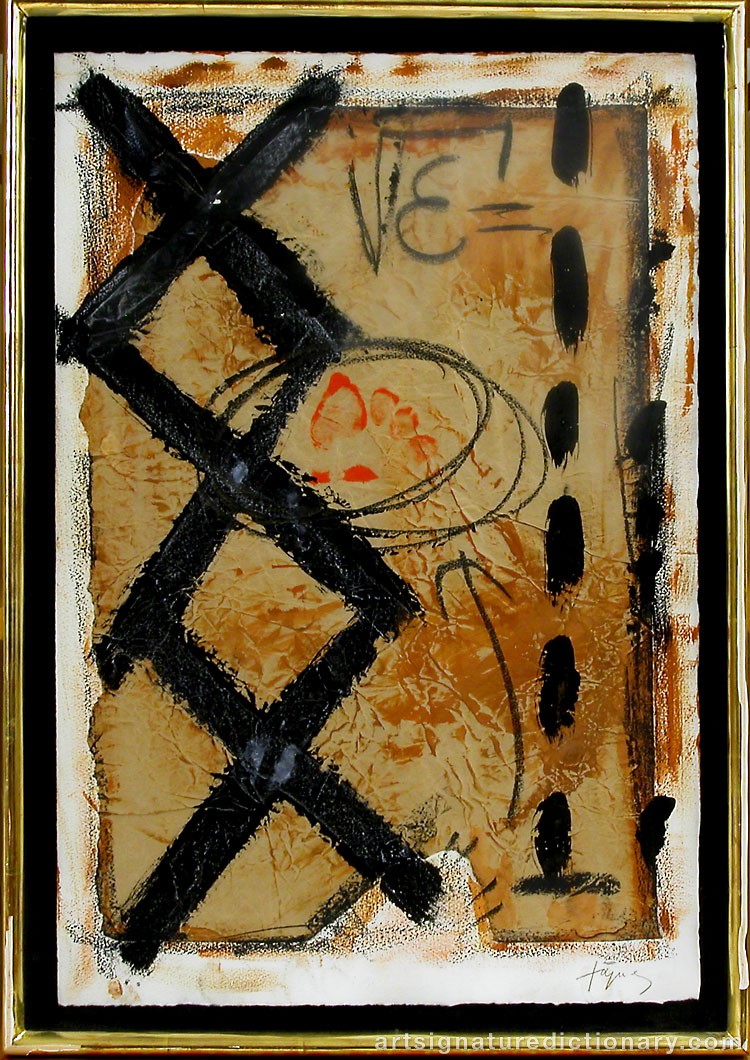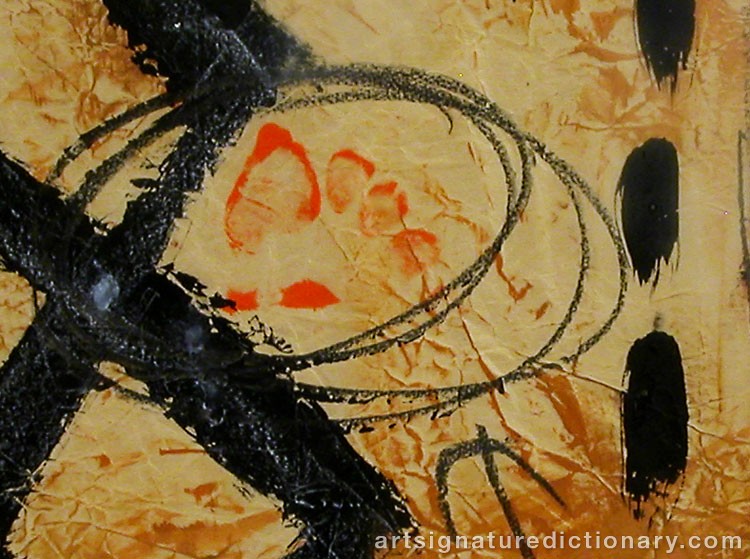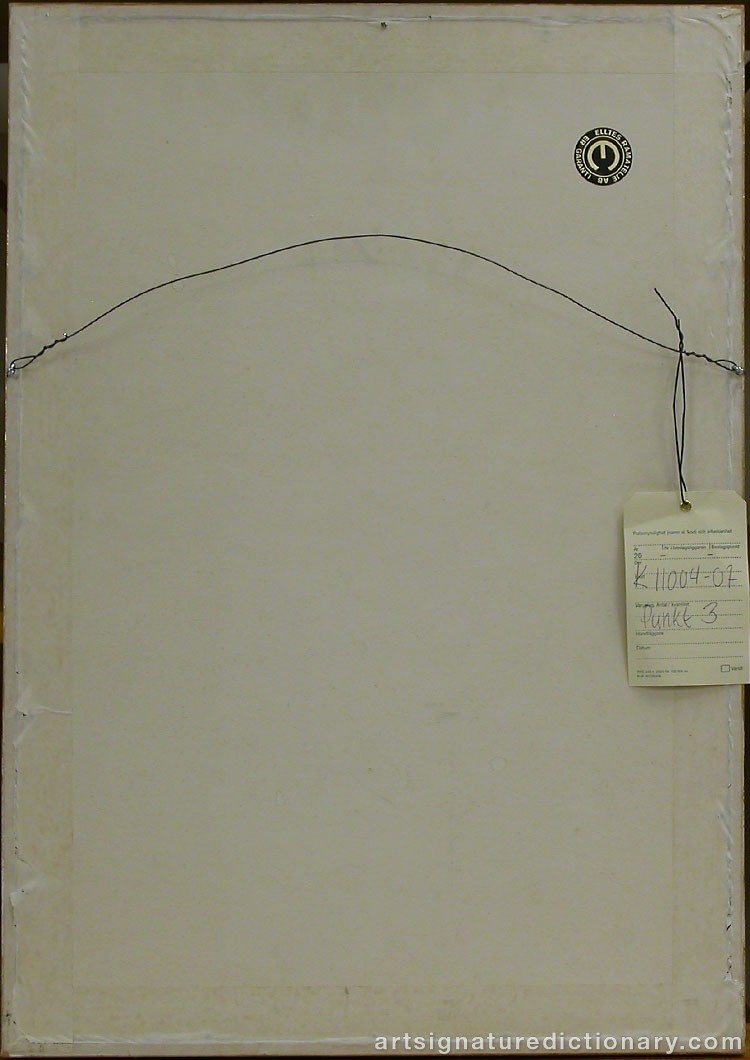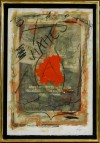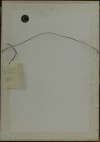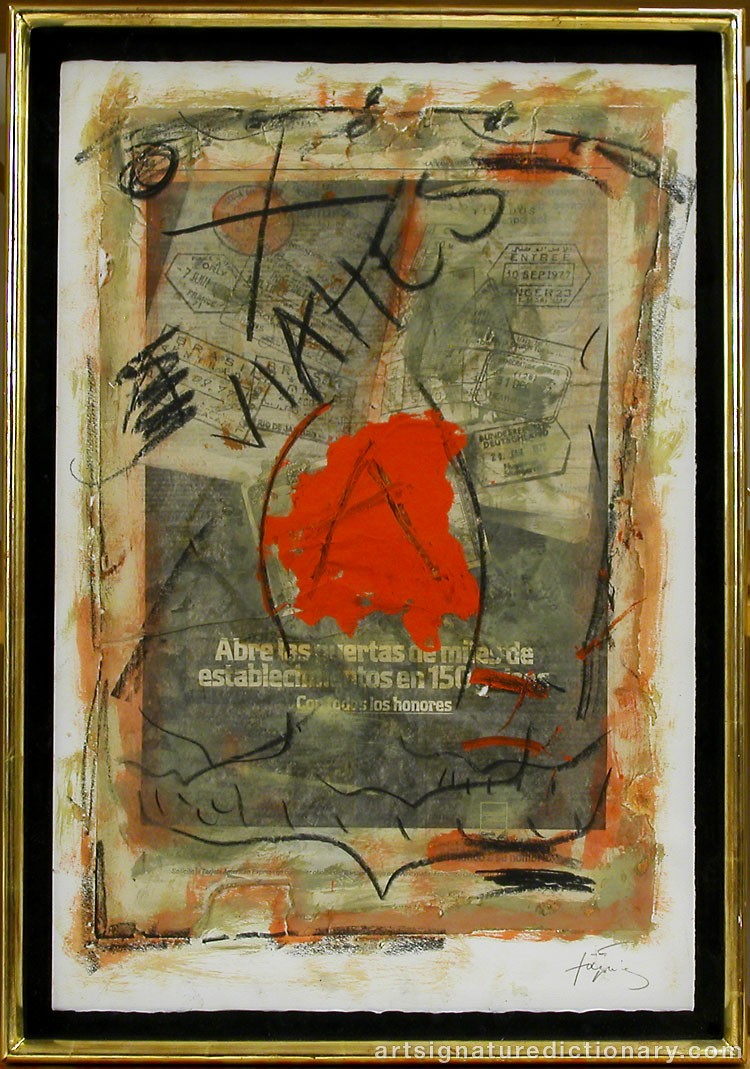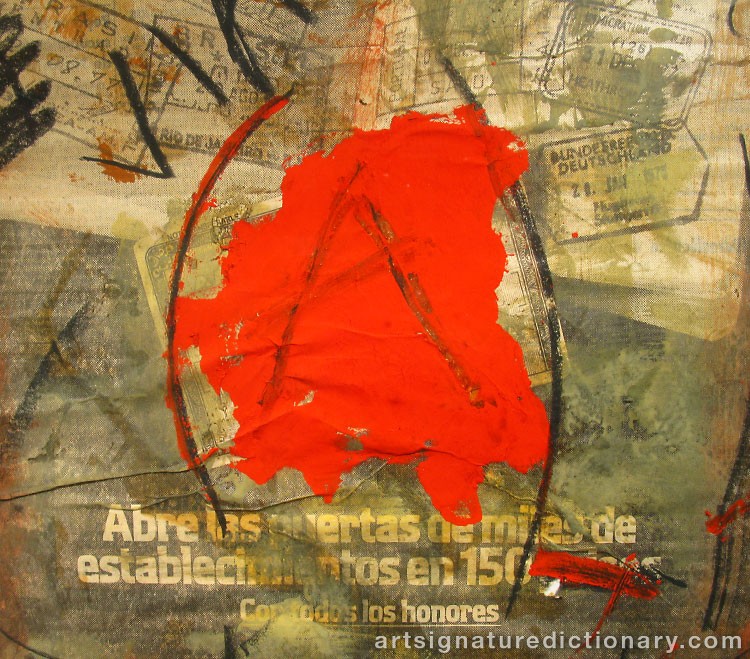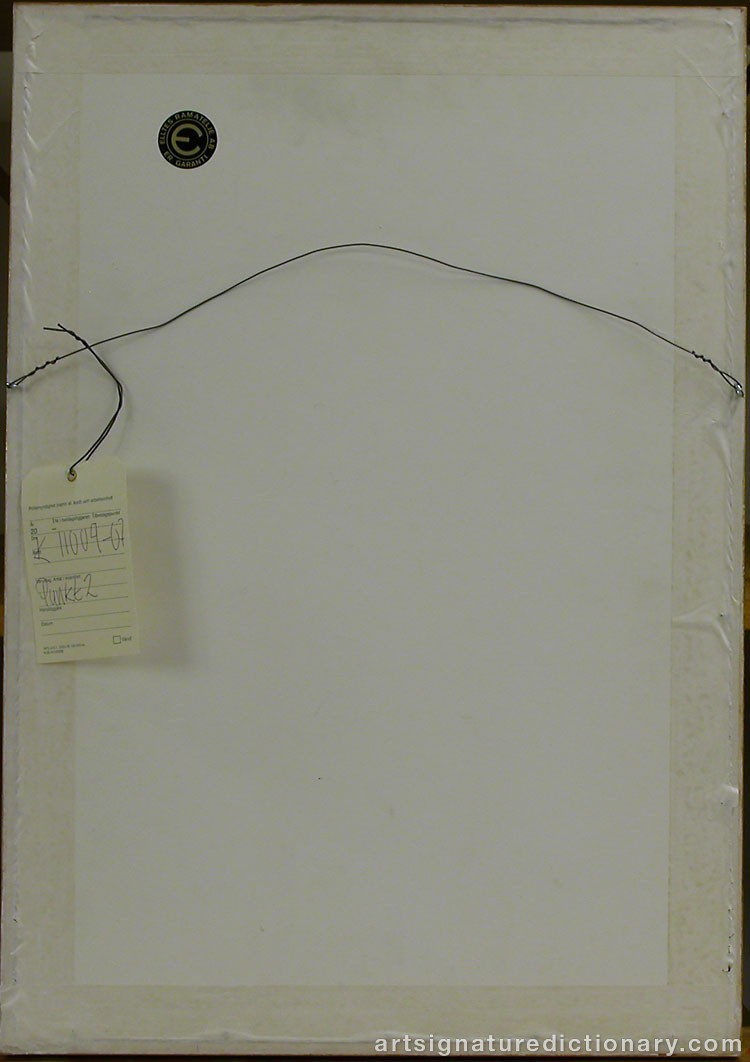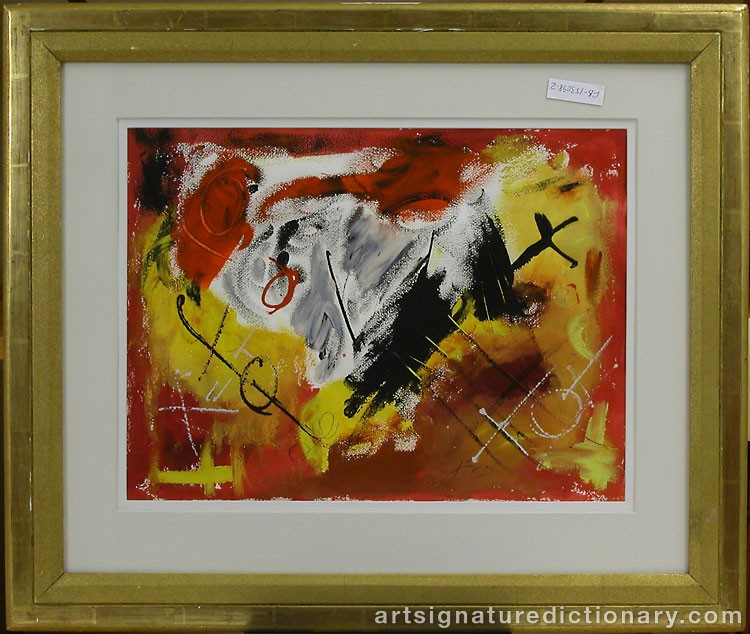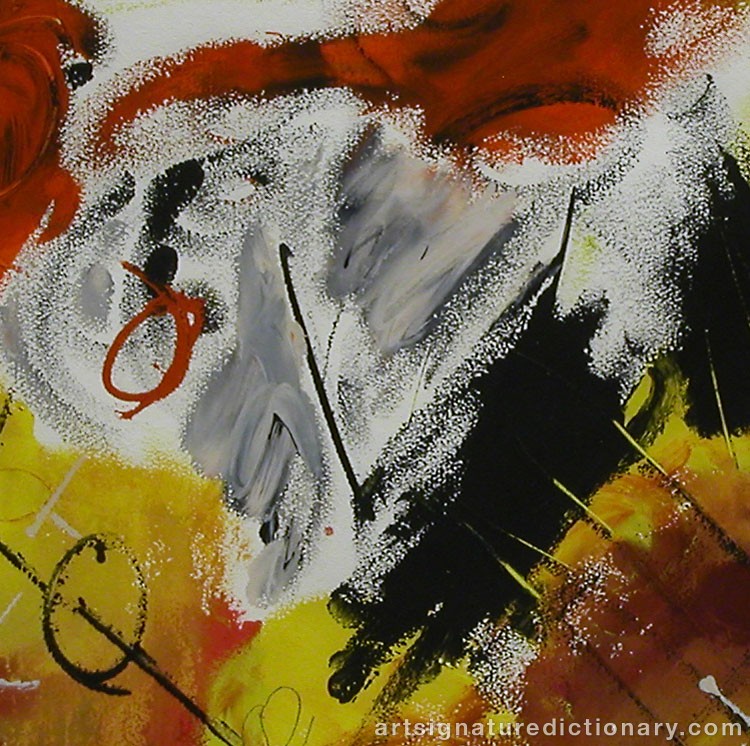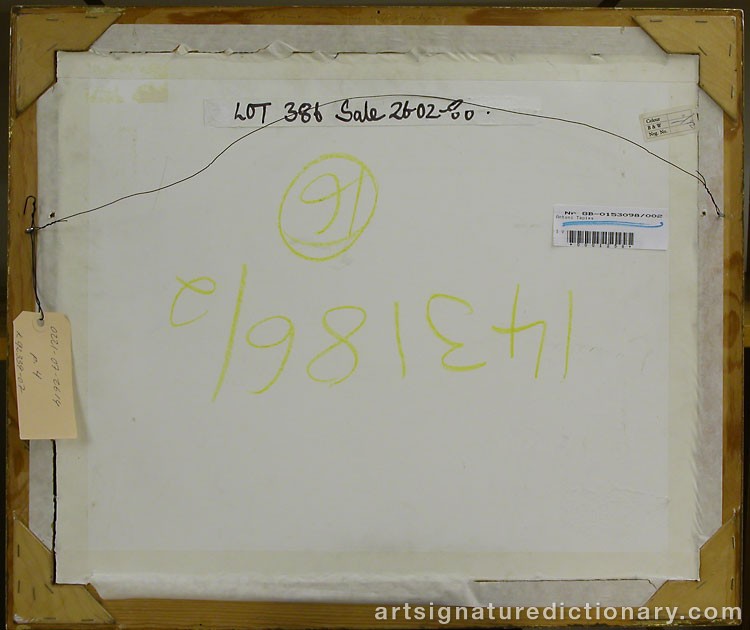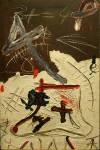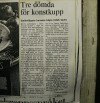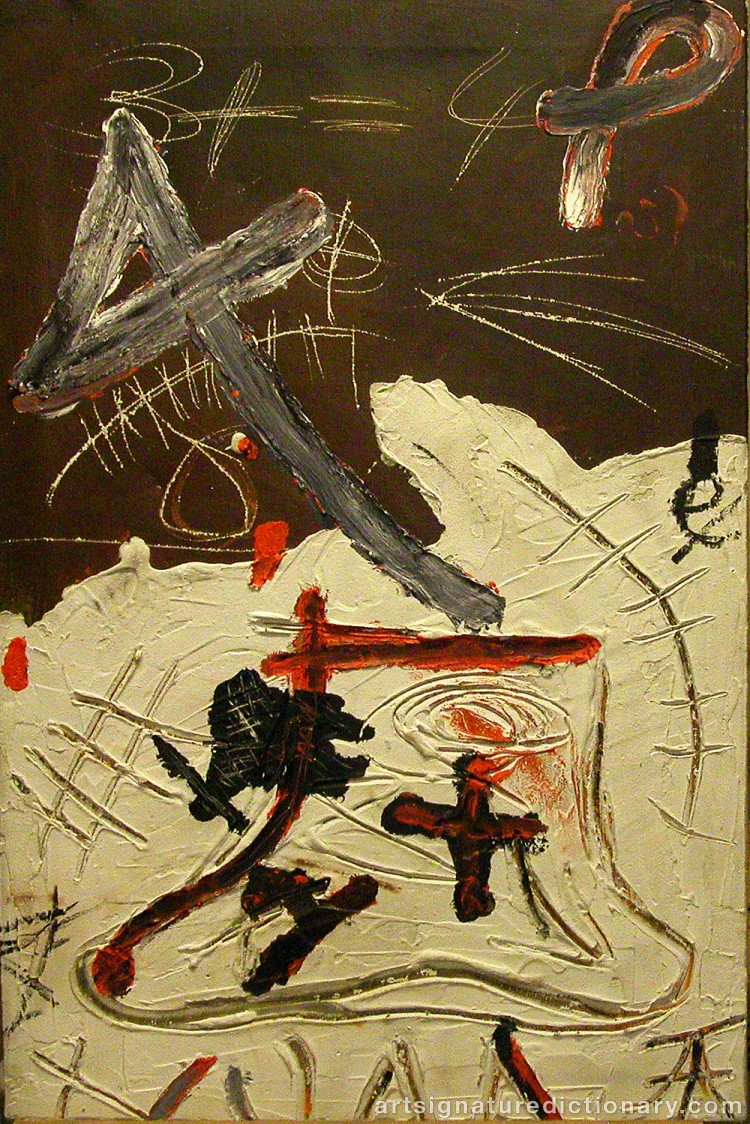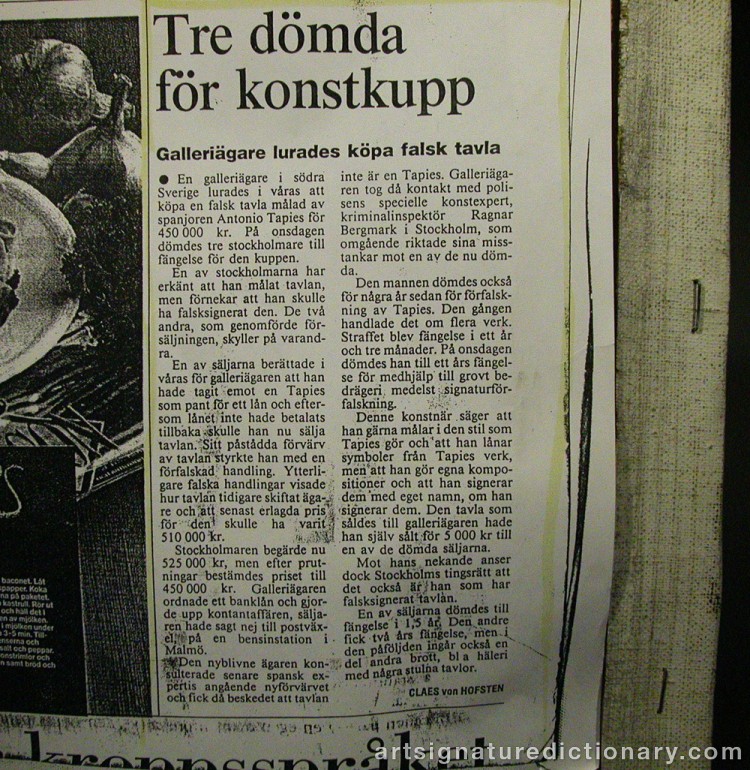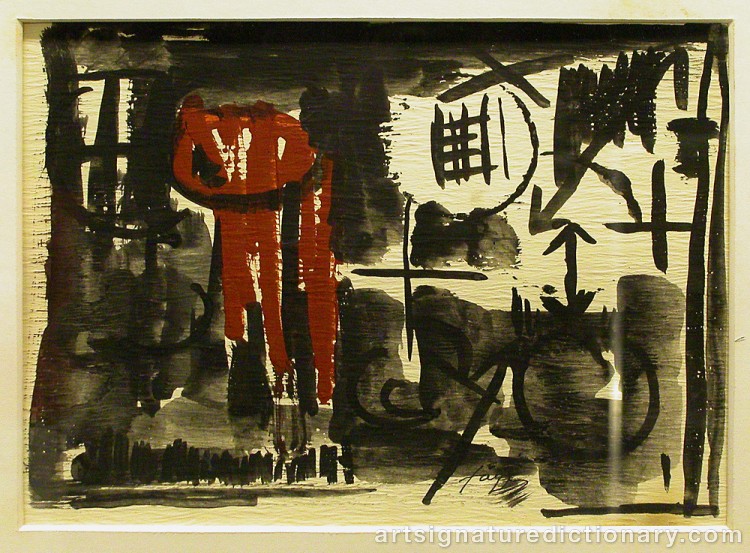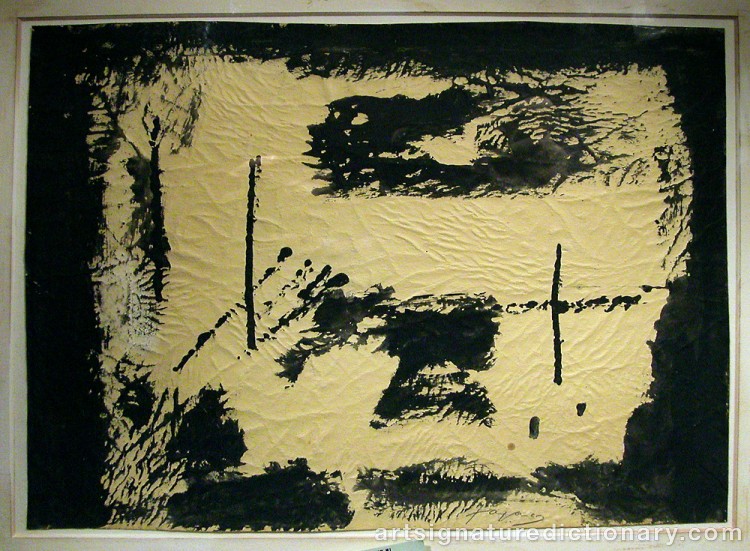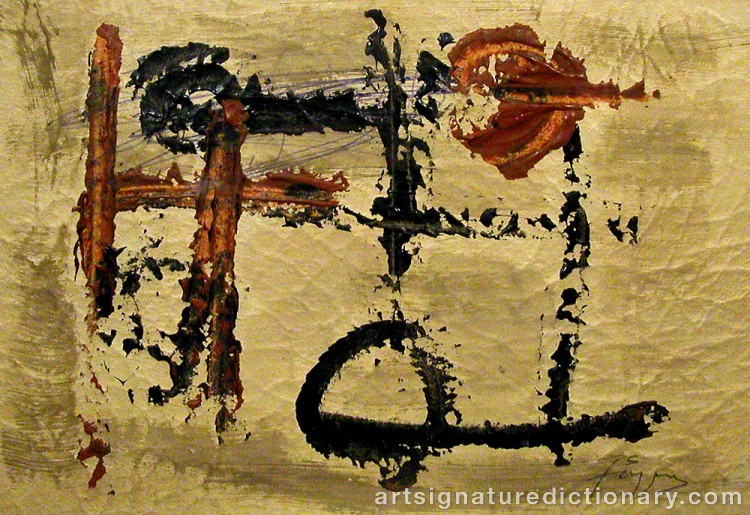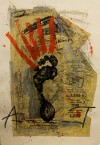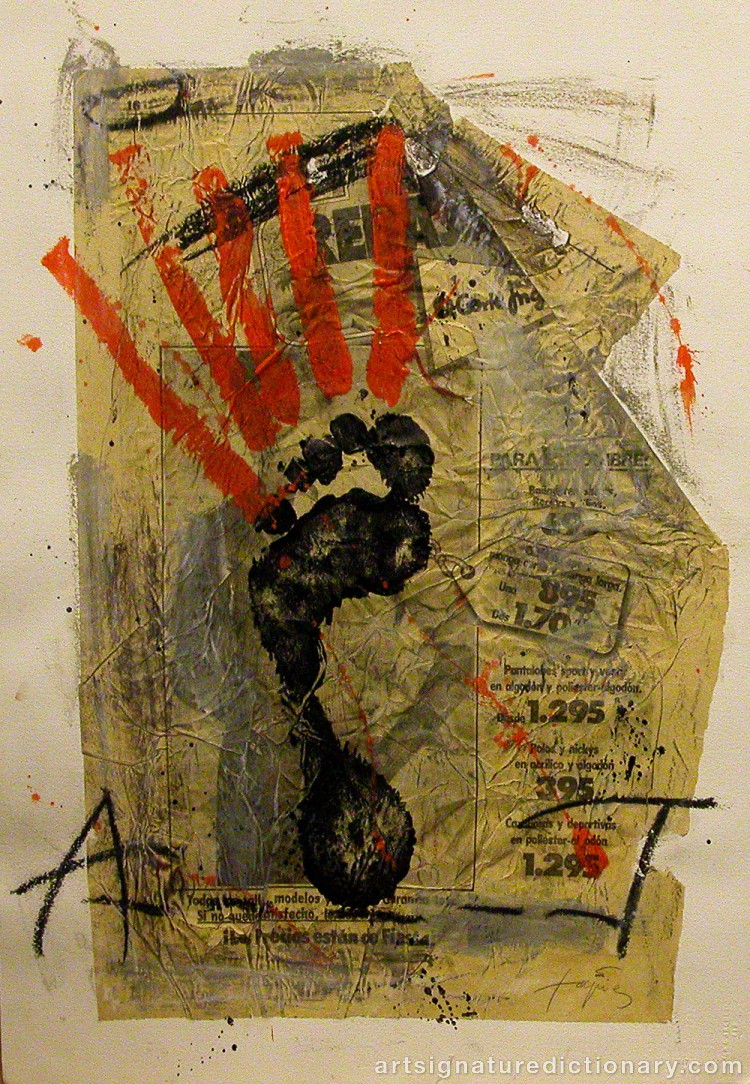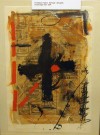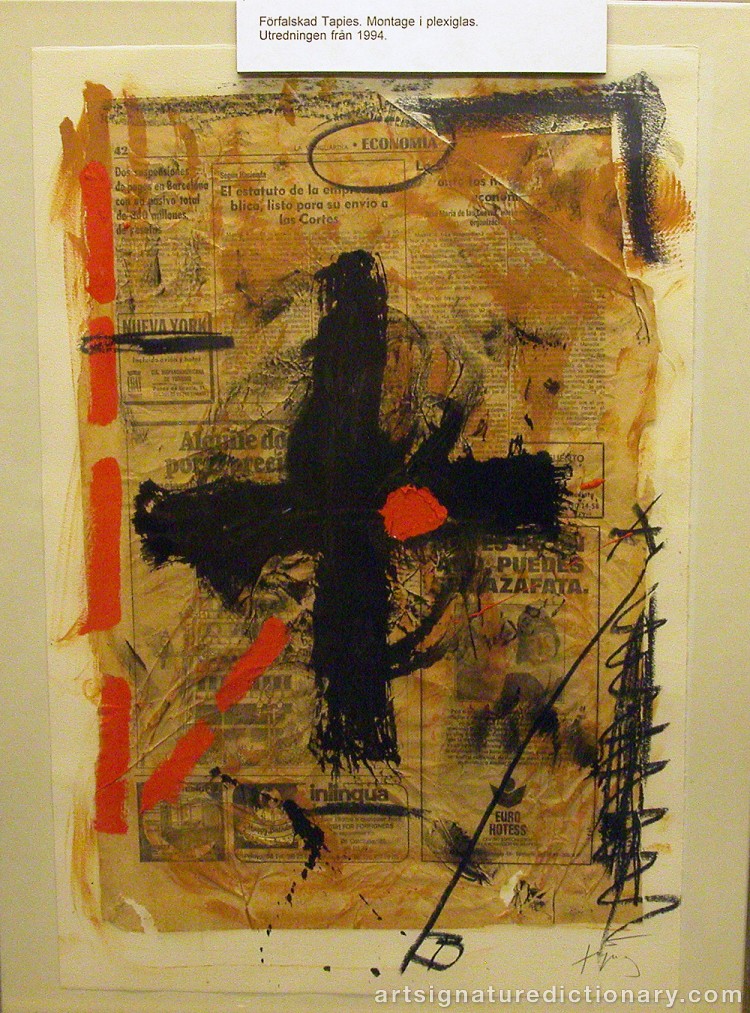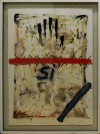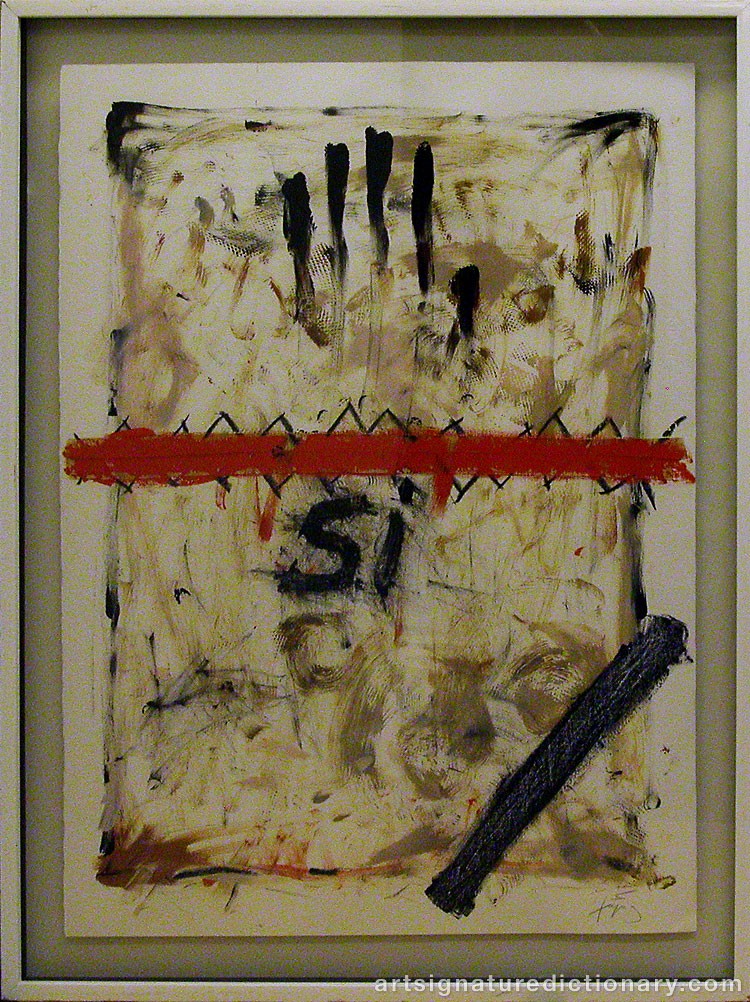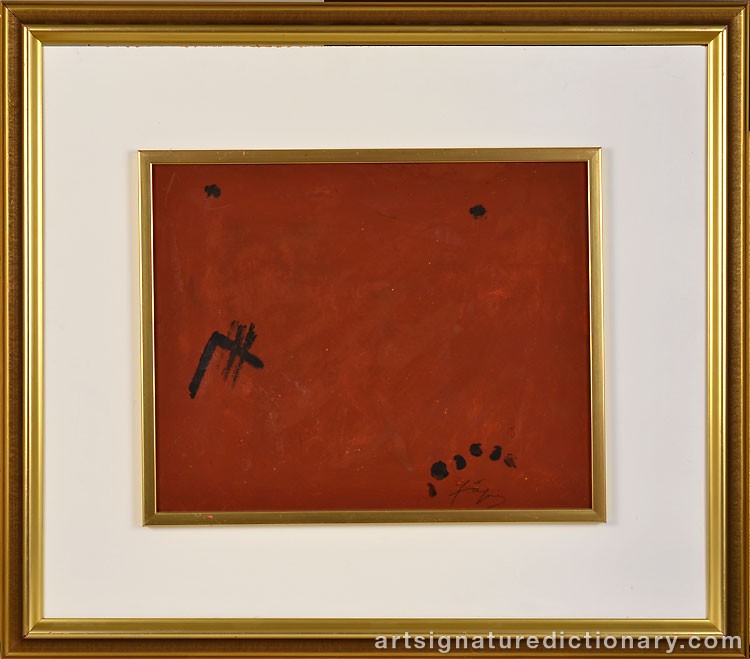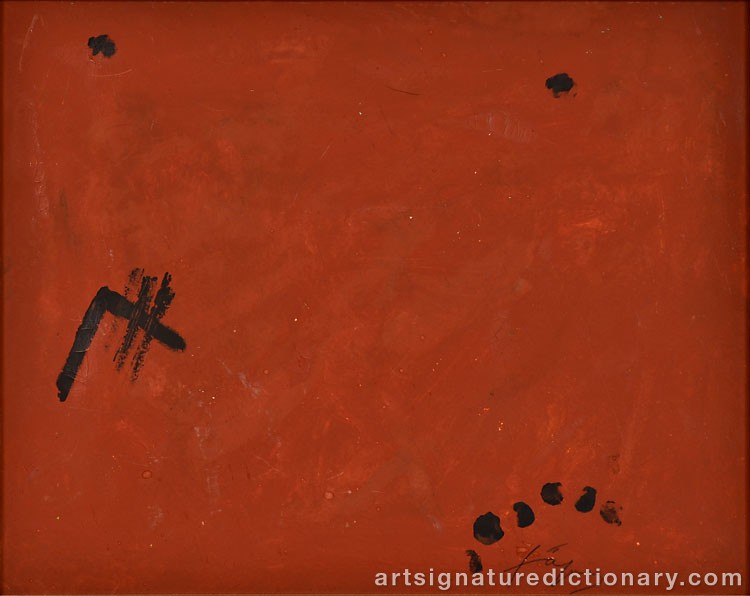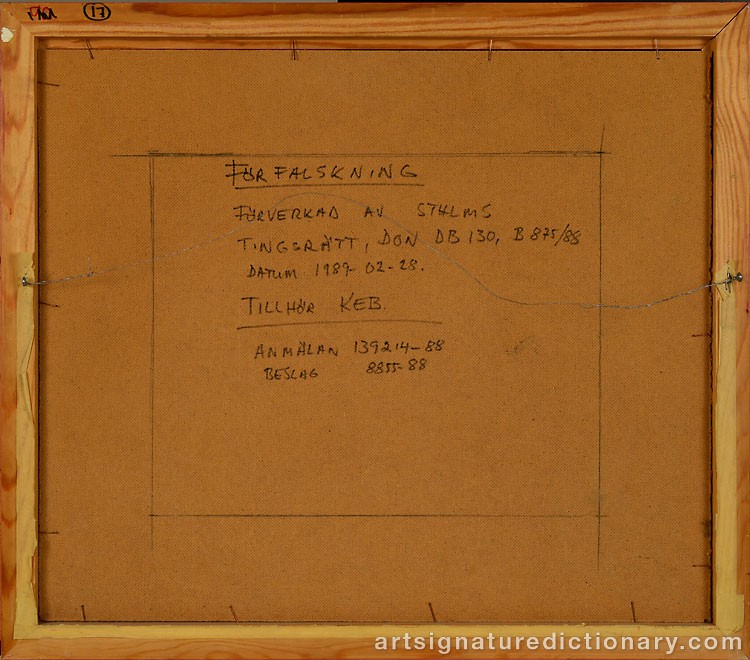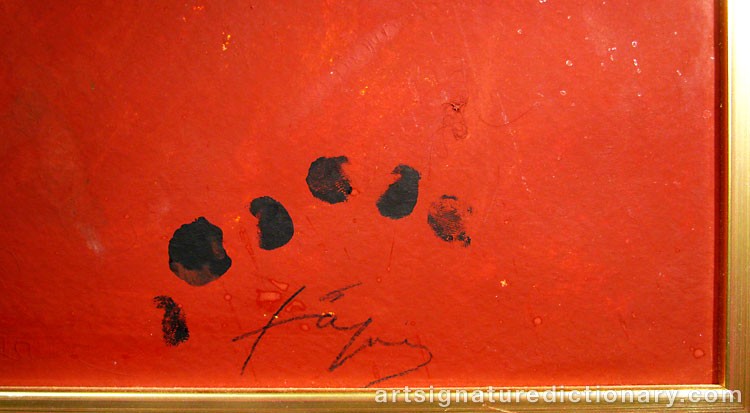Antoni TAPIES
1923, Spain
Also known as: AT

Signature proven counterfeit
Mixed media on brown paper. In the mid 1980s, counterfeiting of Joan Miró and Antoni Tàpies appear on the market. Some were accompanied by certificates of authenticity by different people, who claimed to be experts in Miro and Tapies. Eventually it was understood that this was counterfeiting. A 40-year-old man was arrested for fraud. More and more counterfeit paintings signed Miró and Tàpies appeared. The buyers said that the paintings came from 40-year-old man. Tàpies made use sometimes of his palms and soles, as elements in his paintings. Five of the paintings were done with this technology and could be traced to the man. He acknowledged that he painted some 50 fakes. Of these 34 pieces found in connection with the investigation. Even today, it pops up fakes, likely made by the same person. Some of the counterfeit Mirómålningarna was sold at Christie's in New York for over 100,000 SEK each. All of the paintings was forged signed copies carried out in order to mimic the Tàpies and Miró painting. The 40-year-old man was sentenced to imprisonment for one year and three months for aggravated fraud by signature forgery.

Signature proven counterfeit

Signature proven counterfeit

Signature proven counterfeit

Signature proven counterfeit
Mixed media. The painting was submitted for sale at a major auction house in Stockholm. At the auction house became one suspicious about the painting's authenticity and therefore called the police who took the painting seized for further investigation. Police contacted Fundacio Antoni Tapies in Barcelona, confirming that the painting is not performed by Antoni Tapies. Court decision: The painting is not genuine. It is a forgery.

Signature proven counterfeit
An art dealer in southern Sweden was deceived into buying a counterfeit painting by Antonio Tapies for 450,000 SEK of three people from Stockholm. Art dealer shows his acquisition of a Spanish expert advising that the painting can not be painted by Tapies. He contacts the police who take painting seized for further investigation. One of the three men who sold the painting admits that he painted the painting but denies that he would have signed it. The two other blaming each other. The district court judge eventually two of the men to prison.

Signature proven counterfeit
Mixed media. In the mid 1980s, counterfeiting of Joan Miró and Antoni Tàpies appear on the market. Some were accompanied by certificates of authenticity by different people, who claimed to be experts in Miro and Tapies. Eventually it was understood that this was counterfeiting. A 40-year-old man was arrested for fraud. More and more counterfeit paintings signed Miró and Tàpies appeared. The buyers said that the paintings came from 40-year-old man. Tàpies made use sometimes of his palms and soles, as elements in his paintings. Five of the paintings were done with this technology and could be traced to the man. He acknowledged that he painted some 50 fakes. Of these 34 pieces found in connection with the investigation. Even today, it pops up fakes, likely made by the same person. Some of the counterfeit Mirómålningarna was sold at Christie's in New York for over 100,000 SEK each. All of the paintings was forged signed copies carried out in order to mimic the Tàpies and Miró painting. The 40-year-old man was sentenced to imprisonment for one year and three months for aggravated fraud by signature forgery.

Signature proven counterfeit
Mixed media. In the mid 1980s, counterfeiting of Joan Miró and Antoni Tàpies appear on the market. Some were accompanied by certificates of authenticity by different people, who claimed to be experts in Miro and Tapies. Eventually it was understood that this was counterfeiting. A 40-year-old man was arrested for fraud. More and more counterfeit paintings signed Miró and Tàpies appeared. The buyers said that the paintings came from 40-year-old man. Tàpies made use sometimes of his palms and soles, as elements in his paintings. Five of the paintings were done with this technology and could be traced to the man. He acknowledged that he painted some 50 fakes. Of these 34 pieces found in connection with the investigation. Even today, it pops up fakes, likely made by the same person. Some of the counterfeit Mirómålningarna was sold at Christie's in New York for over 100,000 SEK each. All of the paintings was forged signed copies carried out in order to mimic the Tàpies and Miró painting. The 40-year-old man was sentenced to imprisonment for one year and three months for aggravated fraud by signature forgery.

Signature proven counterfeit
Mixed media. In the mid 1980s, counterfeiting of Joan Miró and Antoni Tàpies appear on the market. Some were accompanied by certificates of authenticity by different people, who claimed to be experts in Miro and Tapies. Eventually it was understood that this was counterfeiting. A 40-year-old man was arrested for fraud. More and more counterfeit paintings signed Miró and Tàpies appeared. The buyers said that the paintings came from 40-year-old man. Tàpies made use sometimes of his palms and soles, as elements in his paintings. Five of the paintings were done with this technology and could be traced to the man. He acknowledged that he painted some 50 fakes. Of these 34 pieces found in connection with the investigation. Even today, it pops up fakes, likely made by the same person. Some of the counterfeit Mirómålningarna was sold at Christie's in New York for over 100,000 SEK each. All of the paintings was forged signed copies carried out in order to mimic the Tàpies and Miró painting. The 40-year-old man was sentenced to imprisonment for one year and three months for aggravated fraud by signature forgery.

Signature proven counterfeit
Mixed media. In the mid 1980s, counterfeiting of Joan Miró and Antoni Tàpies appear on the market. Some were accompanied by certificates of authenticity by different people, who claimed to be experts in Miro and Tapies. Eventually it was understood that this was counterfeiting. A 40-year-old man was arrested for fraud. More and more counterfeit paintings signed Miró and Tàpies appeared. The buyers said that the paintings came from 40-year-old man. Tàpies made use sometimes of his palms and soles, as elements in his paintings. Five of the paintings were done with this technology and could be traced to the man. He acknowledged that he painted some 50 fakes. Of these 34 pieces found in connection with the investigation. Even today, it pops up fakes, likely made by the same person. Some of the counterfeit Mirómålningarna was sold at Christie's in New York for over 100,000 SEK each. All of the paintings was forged signed copies carried out in order to mimic the Tàpies and Miró painting. The 40-year-old man was sentenced to imprisonment for one year and three months for aggravated fraud by signature forgery.

Signature proven counterfeit
Mixed media. In the mid 1980s, counterfeiting of Joan Miró and Antoni Tàpies appear on the market. Some were accompanied by certificates of authenticity by different people, who claimed to be experts in Miro and Tapies. Eventually it was understood that this was counterfeiting. A 40-year-old man was arrested for fraud. More and more counterfeit paintings signed Miró and Tàpies appeared. The buyers said that the paintings came from 40-year-old man. Tàpies made use sometimes of his palms and soles, as elements in his paintings. Five of the paintings were done with this technology and could be traced to the man. He acknowledged that he painted some 50 fakes. Of these 34 pieces found in connection with the investigation. Even today, it pops up fakes, likely made by the same person. Some of the counterfeit Mirómålningarna was sold at Christie's in New York for over 100,000 SEK each. All of the paintings was forged signed copies carried out in order to mimic the Tàpies and Miró painting. The 40-year-old man was sentenced to imprisonment for one year and three months for aggravated fraud by signature forgery.

Signature proven counterfeit
Mixed media. In the mid 1980s, counterfeiting of Joan Miró and Antoni Tàpies appear on the market. Some were accompanied by certificates of authenticity by different people, who claimed to be experts in Miro and Tapies. Eventually it was understood that this was counterfeiting. A 40-year-old man was arrested for fraud. More and more counterfeit paintings signed Miró and Tàpies appeared. The buyers said that the paintings came from 40-year-old man. Tàpies made use sometimes of his palms and soles, as elements in his paintings. Five of the paintings were done with this technology and could be traced to the man. He acknowledged that he painted some 50 fakes. Of these 34 pieces found in connection with the investigation. Even today, it pops up fakes, likely made by the same person. Some of the counterfeit Mirómålningarna was sold at Christie's in New York for over 100,000 SEK each. All of the paintings was forged signed copies carried out in order to mimic the Tàpies and Miró painting. The 40-year-old man was sentenced to imprisonment for one year and three months for aggravated fraud by signature forgery.


Signature considered genuine

Signature considered genuine

Signature considered genuine

Signature considered genuine

Signature considered genuine

Signature considered genuine

Signature considered genuine

Signature considered genuine

Signature considered genuine

Signature considered genuine

Signature considered genuine

Signature considered genuine
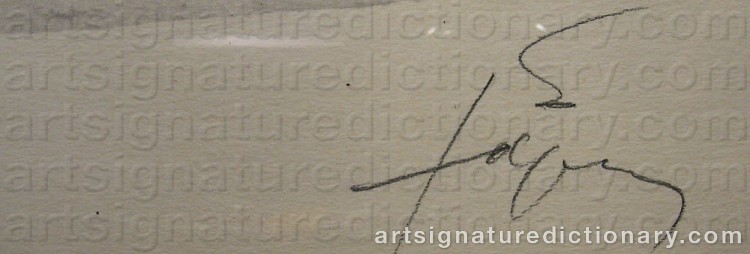
Signature considered genuine

Signature considered genuine

Signature considered genuine

Signature considered genuine

Signature considered genuine
